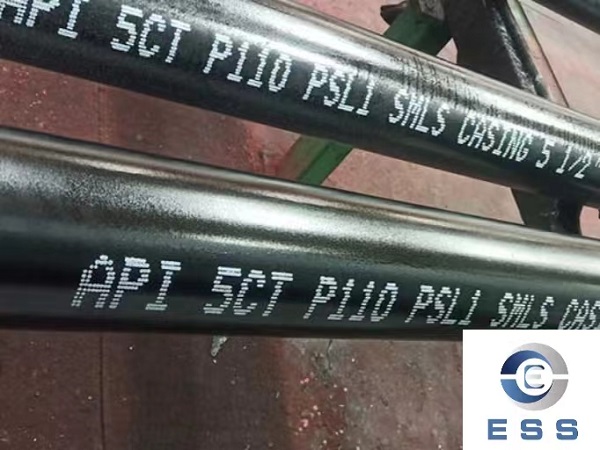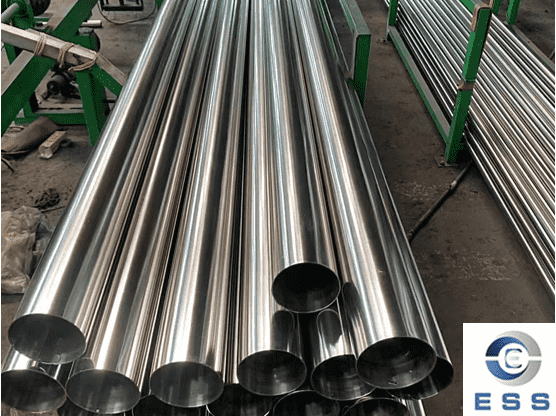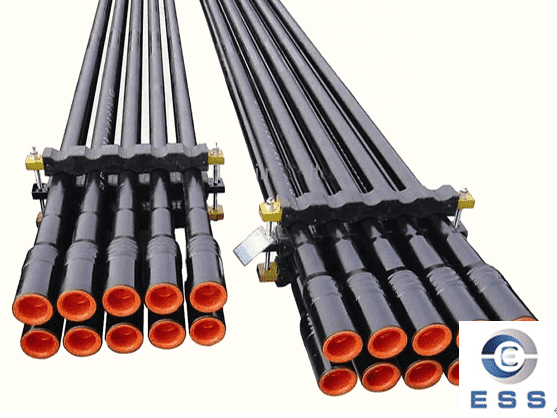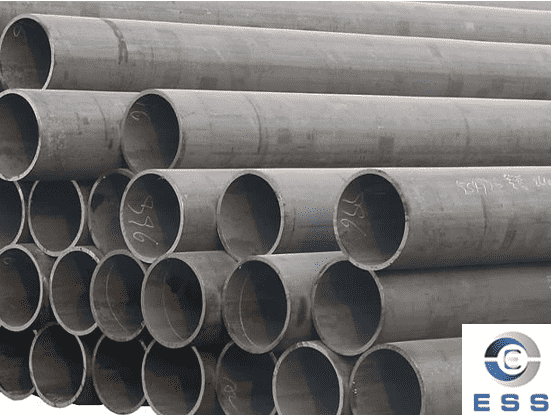Oil well pipe is a special pipe for oil drilling, including drill pipe, ordinary oil pipe, ordinary casing, special buckle casing, and casing made of special sulfur and corrosion resistance. Among them, the drill string components include heavy drill pipe, kelly, drill collar, drill pipe and so on. the
Drill string components are reusable drilling tools. There are two kinds of kelly: one is hexagonal; the other is square, which is generally used domestically. Among them, one of the most important tools is the drill pipe. Connecting the drill pipe to the lower part of the kelly can achieve the function of transmitting power and transporting mud; the drill collar is characterized by high rigidity and thick pipe wall. Below the drill string, it can be used to break rocks, and can play a guiding role to ensure that the wellbore of the vertical well is not skewed; the weighted drill pipe is a transitional tool, which is mainly connected between the drill collar and the drill pipe. It can be used in the process of inclined well. the
The oil pipe is the pipeline for pumping oil. When the oil well is drilled, the oil pipe is set in the casing. There are two types of oil pipes: thickened type and flat type. Under normal circumstances, the oil pipe can be reused, but the number of times of use should not exceed three times, and it should be replaced in time when there is a problem. The diameter range of the tubing is 603-1143mm, the wall thickness is 483-688mm, and the material mainly includes J55, N80, P110, etc. the
The casing is connected by thread, the main purpose is to shorten the downhole time. The casing is a one-time material, once there is a problem in use, it will cause a huge loss, so the quality requirements for the casing are extremely strict.
The more special products in the bushing include special buckle-shaped bushings and bushings with special materials and properties such as sulfur resistance, corrosion resistance, and collapse resistance. The special buckle-type casing is mainly used for deep well cementing where the tensile strength of ordinary casing does not meet the requirements, and is generally only used for a section at the wellhead; the sulfur-resistant and corrosion-resistant casing is mainly used for deep and ultra-deep wells in sulfur-containing oil fields; Casing is mainly used in deep wells and ultra-deep wells in oilfields where the extrusion force is high and the casing is required to have good mechanical properties and collapse performance. the
Oil well casing is a steel pipe used to support the walls of oil and gas wells to ensure the normal operation of the entire oil well after the drilling process and completion. Each well uses several layers of casing according to different drilling depths and geological conditions. Cement cementing is used after the casing is lowered into the well. Unlike oil pipes and drill pipes, it cannot be reused and is a one-time consumable material. Therefore, the consumption of casing accounts for more than 70% of all oil well pipes. Casing can be divided into: conduit, surface casing, technical casing and oil layer casing according to the usage.

①Guide sleeve: mainly used for drilling in oceans and deserts to separate seawater and sand to ensure smooth drilling. The main specifications of this layer of casing are: φ762mm (30in) × 25.4mm, φ762mm (30in) × 19.06mm .
the
②Surface casing - to protect the drilling from being polluted by shallow water layer and shallow gas layer, support wellhead equipment and maintain the weight of other layers of casing.
It is mainly used for the first spud drilling, to drill the loose stratum from the surface to the bedrock. In order to seal this part of the stratum from collapse, it needs to be sealed with the surface casing. The main specifications of the surface casing: 508mm (20in), 406.4mm (16in), 339.73mm (13-3/8in), 273.05mm (10-3/4in), 244.48mm (9-5/8in), etc. The depth of the lower pipe depends on the depth of the soft formation, generally 80-1500m. The external pressure and internal pressure it bears are not large, and K55 steel grade or N80 steel grade is generally used.
③Technical casing-separate the pressure of different layers, so that the drilling fluid can flow normally and protect the production casing, so that anti-burst devices, leak-proof devices and tail pipes can be installed in the drilling.
Used in the drilling process of complex formations, when encountering complex parts such as collapsed layers, oil layers, gas layers, water layers, lost circulation layers, and salt-gypsum layers, technical casing sealing is required, otherwise drilling cannot be carried out. Some wells have deep and complex formations, and the depth of the well is several thousand meters. This kind of source well requires several layers of technical casing, which requires high mechanical properties and sealing performance, and the steel grades used are also high, except for K55. , N80 and P110 steel grades are mostly used, and some deep wells also use Q125 or even higher non-API steel grades such as V150. The main specifications of technical sleeves are: 339.73mm (13-3/8in), 273.05mm (10-3/4in), 244.48mm (9-5/8in), 219.08mm (8-5/8in), 193.68 mm (7-5/8in), 177.8mm(7in), etc.
④ Reservoir stone casing (production casing) - to lead oil and gas out of the subsurface reservoir, to protect the drilling well, and to layer the drilling mud. When the oil casing is produced, the outer diameter is usually 114.3mm to 508mm.
When the well is drilled to the target layer (the layer containing oil and gas), it is necessary to seal the oil and gas layer and the upper exposed formation with the oil layer casing, and the inside of the oil layer casing is the oil pipe. Reservoir casing has the deepest drilling depth among the casing casings, and its mechanical properties and sealing performance requirements are also the highest. The steel grades used include K55, N80, P110, Q125, V150, etc. The main specifications of oil layer casing are: 177.8mm (7in), 168.28mm (6-5/8in), 139.7mm (5-1/2in), 127mm (5in), 114.3mm (4-1/2in), etc.
Oil casing is the lifeline to keep oil well running. Due to the different geological conditions, the downhole stress state is complex, and the combined effects of tension, compression, bending and torsional stress act on the pipe body, which puts forward higher requirements on the quality of the casing itself. Once the casing itself is damaged for some reason, it may lead to a reduction in production of the entire well, or even scrap it. the
Performance requirements for high-performance oil well casings used in oil and gas development:
Yield strength 758~862MPa, full-scale impact energy ≥60J at -10°C; corrosion rate ≤0.25mm/a at 180°C, 3.5MPa CO2, flow rate 1m/s corrosion conditions. The oil casing is seamless steel pipe, which adopts high-frequency resistance welding (ERW pipe). The steel plate (coil) welded by ERW is made of low-carbon micro-alloyed steel rolled by TMCP, which has good strength, toughness and compression resistance.
Application Field: Oil and Gas Exploitation
Product category
According to the environment and purpose of use, the oil casing can be divided into the following types:
|
Type
|
Representative Grades
|
|
Ultra-high-strength oil casing for deep and ultra-deep wells
|
VM-140, SM-155G, NK-150, KO-140V,
BG150, TP125
|
|
Low temperature and high toughness oil casing for cold regions
|
SM-110LL、VM-55LT~125LT、
NKCT-110~125、KO-95L~125L、BG80L
|
|
High anti-extrusion casing
|
SM-80~110TT、VM80HC~140HC、
NKHC-125、KO-95CTYS、BG80T
|
|
H2S Stress Corrosion Resistant Oil Casing
|
SM-80S~95S、VM-90S、NKAC-110SS、
TP90S (S)
|
|
Oil casing with both sulfur resistance and high anti-extrusion performance
|
VM-90HCS、KO-95TS、SM-95TS
|
|
Oil and casing resistant to CO2 corrosion
|
SM13CR-80~95, NKCR13S
|
|
Oil and casing resistant to CO2 and low H2Scorrosion
|
SM22CR-65~140、SM25CR-110~130、
SM2242-110
|
|
Oil casing resistant to CO2, H2S and Cl-corrosion
|
SM2035-110, SM20550-110~140、
SM2050-110~140
|
|
Thermal oil casing
|
BG-D60、TP65H、TP120TH
|
|
High pressure gas storage well casing
|
TP80CQJ, TP110CQJ
|
Common bushing performance data:

Oil pipes are mainly used for oil and gas well drilling and oil and gas transportation. It includes oil drilling pipe, oil casing, oil extraction pipe. Oil drill pipe is mainly used to connect drill collars and drill bits and transmit drilling power. The oil casing is mainly used to support the well wall during the drilling process and after the well completion, so as to ensure the drilling process and the normal operation of the entire oil well after the well completion. The oil suction pipe mainly transports the oil and gas at the bottom of the oil well to the surface.
Oil casing is the lifeline to keep oil well running. Due to the different geological conditions, the downhole stress state is complex, and the combined effects of tension, compression, bending and torsional stress act on the pipe body, which puts forward higher requirements on the quality of the casing itself. Once the casing itself is damaged for some reason, it may lead to a reduction in production of the entire well, or even scrap it.
Each well uses several layers of casing according to different drilling depths and geological conditions. Cement cementing is used after the casing is lowered into the well. Unlike oil pipes and drill pipes, it cannot be reused and is a one-time consumable material.
According to the strength of the steel itself, the casing can be divided into different steel grades, namely H40, J55, K55, N80, L80, C90, T95, P110, Q125, V150 (American Petroleum Institute standard API SPEC5CT1988 first edition). Different well conditions and well depths require different steel grades. In a corrosive environment, the casing itself is also required to have corrosion resistance. In places with complex geological conditions, the casing is also required to have anti-collapse performance. The end of the casing is threaded or a special buckle shape.
H40 is the lowest steel grade and is rarely used in the market.
The yield strength of J55 and K55 belong to the same level, the difference between them is that the tensile strength of K55 is higher than that of J55.
N80 is divided into N80-1 and N80Q.
L80 is divided into L80-1, L80-9Cr and L80-13Cr.
C90 is divided into C90-1 and C90-2.
Q125 is divided into Q125-1, Q125-2, Q125-3 and Q125-4.
VI50 is a non-API high-strength steel grade, mainly used in deep wells and ultra-deep wells.

The petroleum industry is an industry that uses petroleum pipes in large quantities, and petroleum pipes play an important role in the petroleum industry:
1. Petroleum pipes are used in a large amount and cost a lot, so there is great potential for saving expenses and reducing costs. The consumption of oil well pipes can be calculated according to the annual drilling feet. In general, 62kg of oil well pipes are required for every 1m of drilling in my country, including 48kg of casing and 10kg of oil pipe. Drill pipe 3kg, drill collar 0.5kg;
2. The mechanical and environmental behavior of the oil pipe has an important influence on the adoption of advanced technology and the increase of production and efficiency in the oil industry;
3. The failure of oil pipes will cause huge losses, and its safety, reliability and service life are of great importance to the oil industry.
When the oil casing is produced, the outer diameter is usually 114.3mm to 508mm.
Processing form of casing end: short round thread, long round thread, partial trapezoidal thread, special buckle, etc.
N80 oil casing is an important equipment for oil drilling. Its main equipment also includes drill pipe, core pipe and casing, drill collar and steel pipe for small diameter drilling. The domestic casing is made of copper steel for geological drilling through hot rolling or cold drawing.
Oil casing calculation formula: (outer diameter - wall thickness) * wall thickness * 0.02466 = kg/m (weight per meter)

The solution to the poor toughness of oil and casing
One is to adopt the method of rapid cooling after tempering to avoid high temperature brittleness and obtain toughness.
The second is that the sub-temperature quenching method can effectively improve harmful elements and impurities and improve toughness through incomplete austenitization of steel grades.
The first method has relatively strict requirements on heat treatment equipment and requires additional costs. Low temperature quenching is lower than the conventional temperature, which reduces the stress of quenching, thereby reducing the deformation of quenching, which ensures the smooth operation of heat treatment production and provides good raw materials for subsequent wire processing.
Note: In view of the accelerated effect of mechanical abrasion on the corrosion of oil casing, it is recommended to add a rubber ring on the tubing coupling or add a centralizer to the serious part of the well deviation, so as to avoid the tubing from scratching the casing and a part during the operation and water injection. Side contact sleeve.













 Eastern Steel Manufacturing Co.,Ltd not only improve product production and sales services, but also provide additional value-added services. As long as you need, we can complete your specific needs together.
Eastern Steel Manufacturing Co.,Ltd not only improve product production and sales services, but also provide additional value-added services. As long as you need, we can complete your specific needs together.










